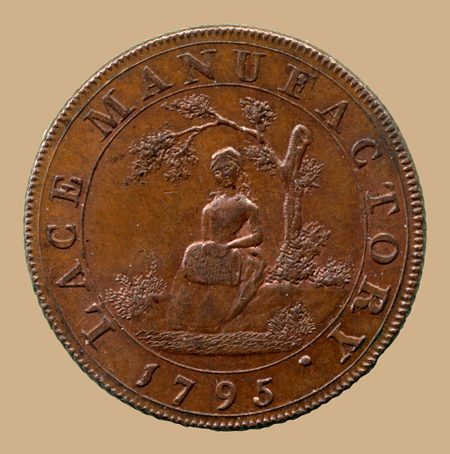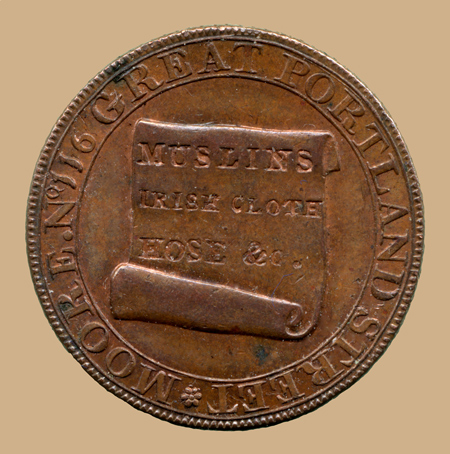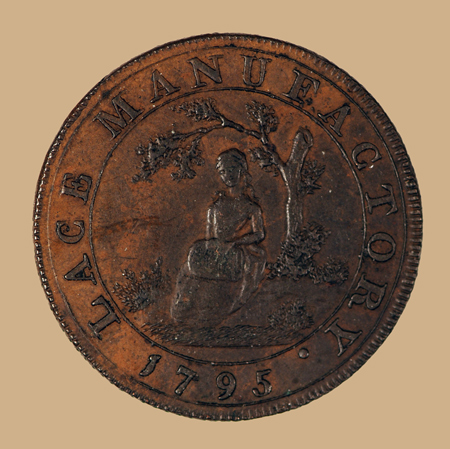Moore's Lace Manufactory, 1795
18th Century Lace Tokens.
Of the Tokens used in the 17th century I have already spoken. At the close of the 18th century there was again a most inconvenient shortage of small change, and tradesmen once more began to issue tokens. Unlike the old tokens which were small and thin, the later tokens were the size and thickenss of a present day florin. A well known example has on one side "Lace manufactury" with a representation of a woman seated under a tree making lace; on the other, PAY AT LEIGHTON BERKHAMSTED OR LONDON. 1794 - and the figure of a sheep; on the edge, "CHAMBERS LANGSTON HALL & CO. Most of these are of copper, but Mr. Arthur Brown (a collector) of Stamford Hill, London, N., has one of silver.
Other tokens with the same Obverse have for Reverse, "PAYABLE AT JOHN ROOKS NORWICH x x x " or, "PAYABLE AT W. GOLDSMITHS BRAINTREE ESSEX.".
Another token is figured and lettered as follows:
obverse. Women seated under a tree making lace. Legend: LACE MANUFACTORY, 1795
reverse. On a scroll in indented letters: MUSLINS IRISH CLOTH HOSE &c. Legend: MOORE NO 116 GREAT PORTLAND STREET
Edge diagonaly milled, in some instances coarsely and in others finely.
Of the Chambers's tokens one ton were struck and of Moore's half a ton. Mr. S. H. Hamer, who supplied t his information says, "There were also a few struck which had an edge-reading not connection with the general design of the token, viz.: PAYABLE AT I. JORDANS DRAPER, GOSPORT."
Thomas Wright, "The Romance of the Lace Pillow"
18th century tokens (from Dalton & Hamer's The Provincial Token-Coinage of the 18th Century)
2) 1795, Moore's Lace Manufactory 1/2d token:
389: Coarse milled edge.
389a: Fine milled edge.
389b: Edge inscription "PAYABLE AT I. JORDANS DRAPER GOSPORT".
389c: Plain edge.
Dalton & Hamer's The Provincial Token-Coinage of the 18th Century
Both my examples have no edge inscriptions. Edges are milled, but whether coarse or fine, I don't know. the figure of the lacemaker is similar to, but not exactly the same as the 1794 Chambers token. The weight of the first example is 11.5 grams, diameter a little less than 2.9 cm. Definitely a bit smaller than the Chamber's token. The second example is the same size, but weighing 10.0 grams.
first posted 3/27/2009 |



